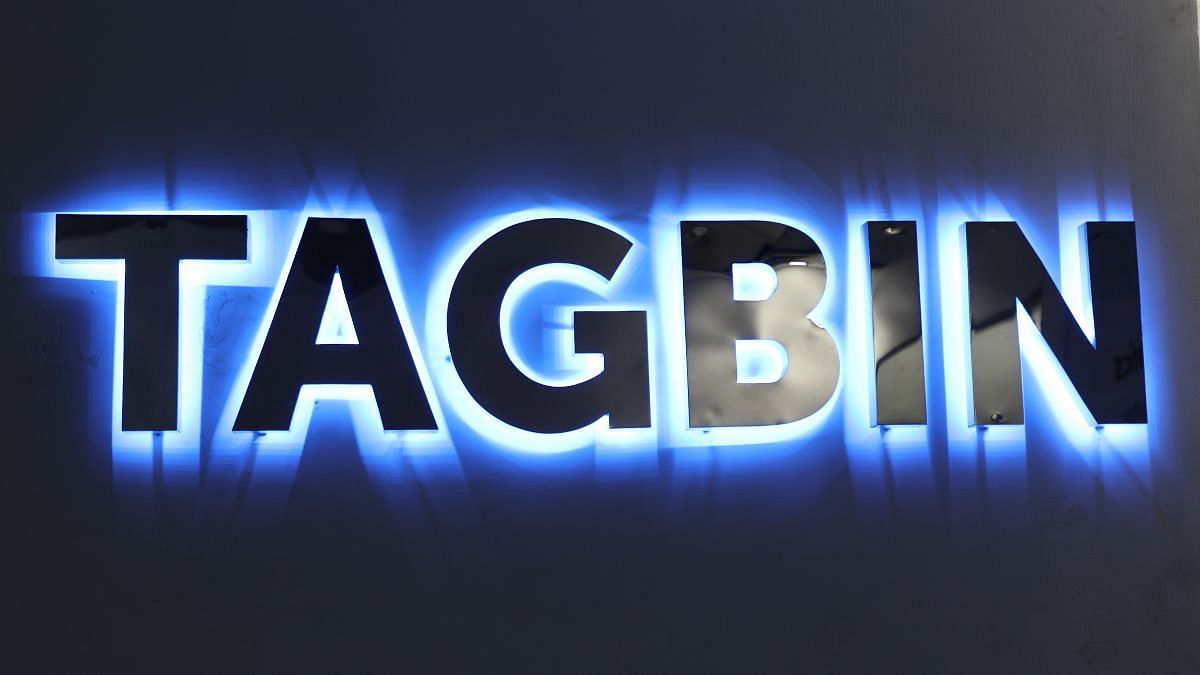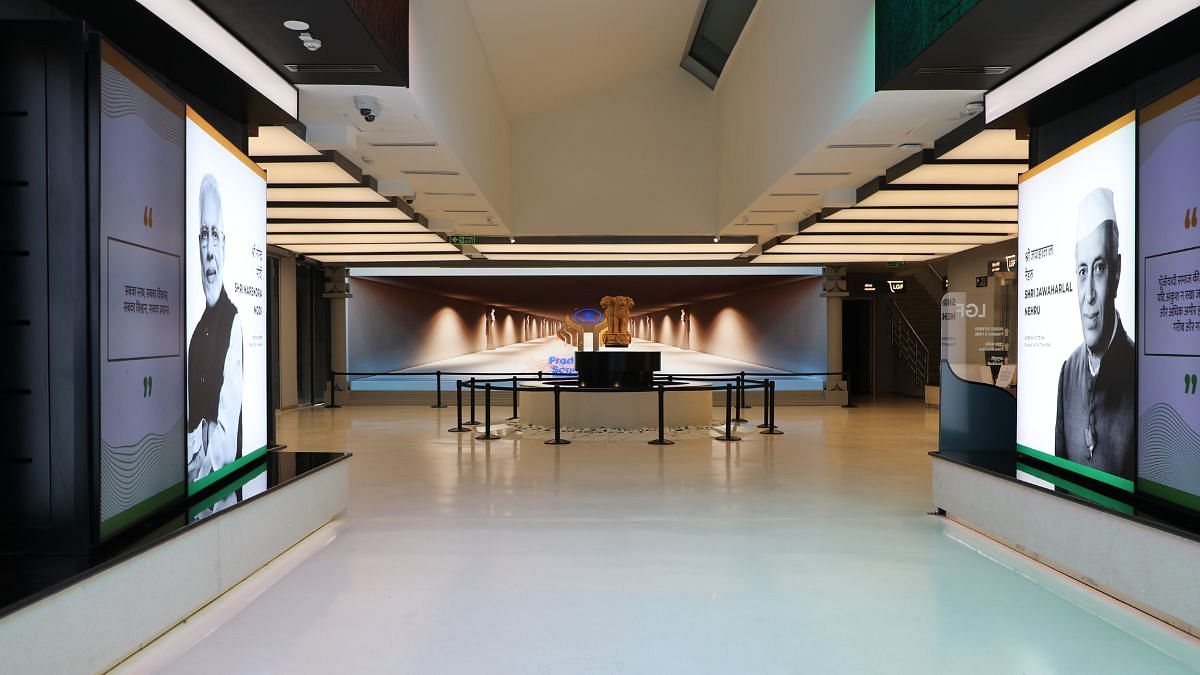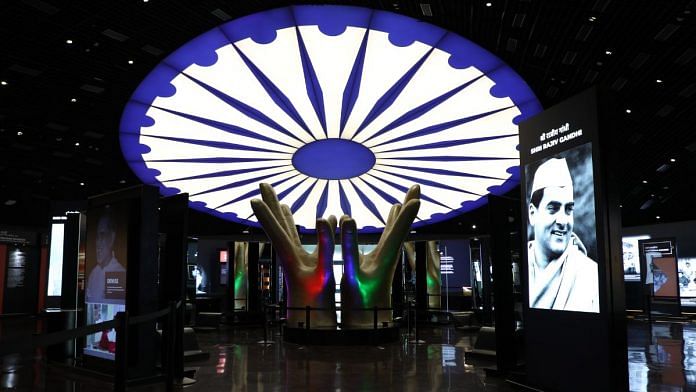New Delhi: It’s not every day that an IIT Roorkee graduate finds his calling in museums. When that happens, India’s cultural plate shifts away from dense academic expertise to people-friendly storytelling.
With a team of 40 techies, content writers, management experts and historians in Gurugram, Tagbin, is working to end the monopoly of stuffy, inactive Indian museums to tech-enabled interactivity. About four months ago, India got the grand Prime Ministers’ Museum at Teen Murti Bhavan. Tagbin’s next mega projects include capturing the stories of India’s 6.5 lakh villages digitally and a Mahabharata museum at Kurukshetra where pods are confession boxes for visitors who can also receive robotic guidance from the Bhagavad Gita.
“We are undergoing a shift in the cultural industry of India, and our focus is to develop that industry. Most museums in India are not attractive. When people visit India, going to our museums is never on their bucket list, not because we don’t have enough cultural stories to tell but because the presentation is lacking,” says Saurav Bhaik, an IIT Roorkee alumni and now the CEO of Tagbin.

He says their work aims to add the ‘wow factor’ to Indian museums.
Tagbin, an experience-driven technology service company that started in 2013, is the force behind some recent nationalistic campaigns that took the country by storm. The group was involved in the Har Ghar Tiranga digital campaign and the RashtraGaan drive.
Also read: Achieving success as a techie in content management system and artificial intelligence spectrum
Bringing India together
Almost all the projects Tagbin has taken on have the underpinnings of public participation. For the RashtraGaan campaign, Tagbin harnessed the voices of 2.5 crore citizens.
It created a website where people could upload videos of themselves singing the national anthem. The anthology of clips was played at the Red Fort on Independence Day. It felt as if all of India was singing in unison.
“Tagbin does nationwide outreach programmes because we believe when we do something, we should do it for the country and its citizens,” says Kritika Duggal, a project manager from Tagbin.
The recent Har Ghar Tiranga campaign was pitched, planned, and managed by Tagbin, in tandem with the Ministry of Culture. The website, which had a ‘Selfie with the flag’ feature invited people to upload their own selfies, and share clips and images of them hoisting the flag. It received 6.5 crore photos. According to Tagbin, 30 crore households hoisted the flag this year.
“A product can be out of the box, but it needs to reach the masses,” says Saurav.
Also read: Guwahati’s Heritage Center is fueling new cultural energy — linking city, Brahmaputra, art

PM selfies to India’s villages
Tagbin wants to change the way we interact with history. It redesigned the Prime Ministers’ Museum or Pradhanmantri Sangrahalaya, formerly the Nehru Museum in Delhi, with an infusion of technology. A ceiling of kinetic lights, opportunities to take a selfie with your favourite prime minister and even get a letter signed by the prime minister of your choice are just a few of the features on offer.
“The signatures, for instance, were developed and derived from the archives of the original handwriting of India’s prime ministers. We also took an old audio file of one of the interviews of the late Prime Minister Lal Bahadur Shastri’s son, and used face mapping to transform the mere audio file into a video,” says Duggal, the project manager of the museum.
But museum exhibits aren’t the only stories that Tagbin has set out to revitalise.
In an upcoming project that is set to launch in about a year from now, the team plans to create a digital portal serving as a window into 6.5 lakh villages. Those who log in will get a glimpse of village life.
“We want to create a virtual identity of these villages. From their arts and crafts to other unique aspects, it is like creating a cultural profile for them,” says Bhaik.
Having worked on 30,000 villages already, team members are overwhelmed by what they have come to learn during the process. They found a village called Mattue in Karnataka where every person speaks Sanskrit. In one village in Gujarat, nobody accepts cash. It’s digital payments all the way.
“In fact, there is one village where every third birth is a twin birth, whether it is a human or an animal,” Saurav says. Tagbin hopes the project will be a “repository” of all these stories.
Also read: Modi govt plans relief for 14 political parties owing 150 cr in land dues, BJP dues maximum
Collaborating with governments to transform education
While Tagbin has ventures in the private sector too, most of its work in India has been in close association with the government. “Even though we are the doers and the thinkers, we work closely with governments who also help us greatly,” adds Saurav.
Even for the Prime Ministers’ Museum, Nripendra Mishra, former principal Secretary to the prime minister, was responsible for overseeing the project. Additionally, there were also other committees led by stalwarts such as Prasoon Joshi, chairperson of the Central Board of Film Certification and MJ Akbar, former Minister of State for External Affairs.
Currently, the company is in talks with Haryan Tourism and Haryana’s the state’s principal secretary. They are also in direct contact with the prime minister for future launches.
Tagbin wants to make India’s stories bigger and better. The company is launching a Satya Sai museum in Bengaluru this year and another one in 2023 encapsulating the Mahabharata and Bhagavad Gita in Kurukshetra.
Visitors to the Kurukshetra museum will be greeted by a levitating Sudarshan Chakra, similar to the levitating Ashoka Pillar in the Prime Ministers’ Museum.
And if all goes as planned, the museum will feature a pod that will allow people to talk about what troubles them—their fears, their worries. In response, a verse from the Gita will be recited to them to help them deal with their troubles or sins. It’s a fusion of AI technology with the past.
What is also noteworthy about this project is that it is net zero, thriving only on solar energy and radiant cooling.
Also read: Tiranga vs Tiranga: Gloves are off as Kejriwal joins the ‘nationalism’ battle with Modi
Sticking to facts
Tagbin has faced some challenges too. “Our biggest challenge with the Prime Ministers’ Museum was assigning space,” says Saurav. It was already a controversial topic as people were enraged that Nehru’s legacy was being dissipated into an overall PM’s museum. But the team decided to simply focus on showcasing all the prime ministers and their impact.
“Museums in India are undergoing quite a revolution,” Bhaik says. “We want to show India in a positive limelight, but we also want to present the facts.”
(Edited by Ratan Priya)






